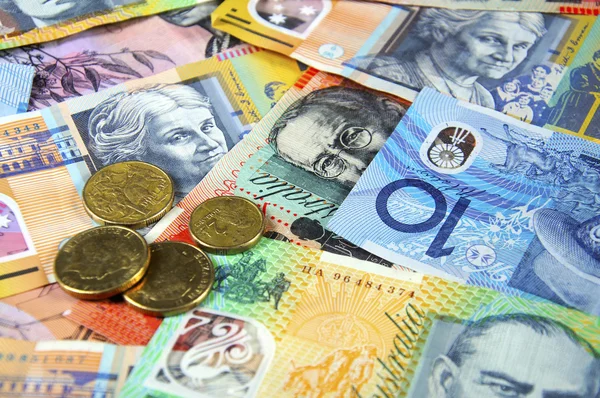Australian Dollar Drops Amid Middle East Tensions and China Trade Risks
The Australian Dollar (AUD) slipped for the second consecutive day against the US Dollar (USD) on Thursday, as investor sentiment deteriorated sharply amid escalating geopolitical tensions in the Middle East and trade frictions involving China. The AUDUSD pair faced a combination of headwinds, from growing instability in the Israel-Iran situation to China’s decision to tighten critical mineral exports factors that rattled risk-sensitive currencies like the Aussie.
While softer US inflation data increased the likelihood of Federal Reserve rate cuts, which typically weaken the US Dollar, the Australian Dollar failed to capitalize. The currency’s bearish momentum continued due to rising global risk aversion and disappointing trade and inflation data at home.
Middle East Conflict Escalates: Safe-Haven Demand Rises
Geopolitical anxieties surged after reports that Israel is prepared to launch a military operation against Iran. This came shortly after US President Donald Trump reiterated that Washington would never allow Iran to acquire nuclear weapons. The US administration also advised some Americans to exit the Middle East, a stark signal that tensions could soon explode into direct conflict.
Such developments typically benefit safe-haven assets like the US Dollar and Japanese Yen while punishing risk-linked currencies like the Australian Dollar. AUD’s sensitivity to global market sentiment makes it particularly vulnerable to geopolitical flashpoints, and this latest crisis is no exception.
Consumer Inflation Expectations Surprise on the Upside
Adding complexity to the AUD’s outlook, Australia’s June Consumer Inflation Expectations surged to 5%, markedly higher than the previous reading of 4.1%. This jump in expectations may signal growing concern among Australian consumers about persistent price pressures, even as global inflation trends appear to be cooling.
Normally, elevated inflation expectations could support a currency by pressuring the central bank to raise rates. However, markets appear to be more focused on broader economic vulnerabilities in Australia and the wider Asia-Pacific region—particularly those tied to China’s slowdown and trade frictions.
China’s Trade Moves Add to Australian Dollar Headwinds
China, Australia’s largest trading partner, introduced a new policy restricting rare-earth exports by only issuing six-month licenses for US automakers and manufacturers. This move, reported by the Wall Street Journal, is widely viewed as a strategic effort to control supply chains and gain leverage in future trade negotiations with Washington.
The decision sent a ripple through commodity-linked markets. Australia, a major exporter of iron ore, coal, and lithium to China, stands to lose if trade relations between China and the US sour further. Any disruption in Chinese manufacturing or export activity could weaken demand for Australian resources—putting additional downward pressure on the Aussie.
Austraoian Dollar Ignores Weak US Dollar Amid Flight to Safety
Ironically, the AUD is slipping even as the US Dollar faces downward pressure from weaker-than-expected inflation data. The US Dollar Index (DXY) declined for the second straight day, trading at around 98.30 as investors priced in increased odds of a September rate cut from the Federal Reserve.
May’s Consumer Price Index (CPI) rose 2.4% YoY, slightly above April’s 2.3% but short of the market forecast of 2.5%. Core CPI, which excludes food and energy, climbed 2.8%—again below consensus estimates. These figures have added to the dovish Fed narrative, with traders now betting on rate cuts in the coming quarter.
Yet, despite a weaker Greenback, the AUD/USD remains pressured. The reason: when geopolitical risks spike, global investors tend to flee to the safety of US Treasuries and the Dollar—even if its yield outlook is softening.
Trump’s Trade Rhetoric Fuels Market Uncertainty
On the trade front, US President Donald Trump claimed on Truth Social that a new trade deal with China was essentially finalized but still needed final approval from both sides. He emphasized, “We are getting a total of 55% tariffs, China is getting 10%,” suggesting a major imbalance favoring the US.
Trump also stated that he may not need to extend the trade talks deadline but would unilaterally impose tariff rates within two weeks if necessary. His remarks sent a mixed message to markets—boosting some hopes of progress while reigniting fears of renewed tariff wars.
Any economic volatility in China directly affects Australia, given their deeply interlinked economies. The combination of assertive US trade posturing and China’s retaliatory rare-earth restrictions poses a dual threat to Australian exports.
US Legal Drama Over Tariffs Adds Another Layer of Complexity
In a parallel legal development, the US Court of Appeals for the Federal Circuit extended a temporary ruling that allows broad tariffs to remain in effect while legal appeals continue. This gives the Trump administration more leeway to maintain or even expand tariffs on imports, a move that could trigger retaliatory actions from China and disrupt global trade.
For the Australian Dollar, such legal and political maneuvers translate into higher volatility. Since Australia’s economic growth is heavily dependent on international trade, especially with Asia, tariff uncertainty typically prompts capital outflows from Australian assets.
China’s Mixed Data Paints Unclear Picture for Australian Dollar
China’s recent trade data added to the confusion. The country posted a trade surplus of CNY743.56 billion in May, up from CNY689.99 billion in April. However, the strength was largely driven by weaker imports rather than booming exports. Imports fell 2.1% YoY in May, following a 0.8% rise in April—indicating tepid domestic demand.
Exports, too, slowed to 6.3% growth YoY from 9.3% in April. These figures suggest that the world’s second-largest economy is still grappling with uneven post-pandemic recovery, raising concerns about its appetite for Australian raw materials.
Australia’s own trade data for April reflected similar challenges. The trade surplus narrowed to 5.4 billion Australian Dollar, down from a revised 6.9 billion. Exports dropped 2.4% month-over-month, while imports increased by 1.1%. This shift reinforces the narrative that external trade dynamics are softening, further weighing on AUD prospects.
Services PMI Offers a Glimmer of Hope
Despite the gloom, some green shoots remain. China’s Caixin Services PMI rose to 51.1 in May from 50.7 in April, signaling modest expansion in the service sector. This suggests that domestic services demand is holding up, potentially cushioning broader economic deceleration.
For Australia, this could signal some stability in Chinese consumer demand especially for agricultural and tourism-linked exports. Still, with manufacturing slowing and exports weakening, the service-led rebound may not be enough to offset the downside risks.
Conclusion: AUD Stuck in the Crosshairs of Global Tensions
The Australian Dollar continues to face a toxic mix of geopolitical, trade, and economic headwinds. From rising Middle East tensions and tighter Chinese export controls to volatile US trade policy, global risk sentiment remains fragile. Meanwhile, domestic data showing rising inflation expectations and falling exports only add to the bearish pressure.
Although softer US inflation data and a weakening US Dollar could, under normal circumstances, support the Aussie, the broader flight to safety is overshadowing such dynamics. Until geopolitical and trade tensions ease, the Austraoian Dollar is likely to remain under pressure, with limited upside in the near term.
[faq-schema id=”39847″]









